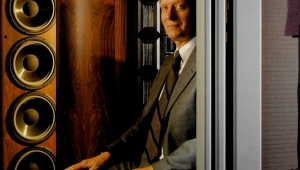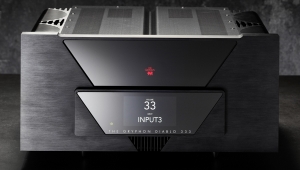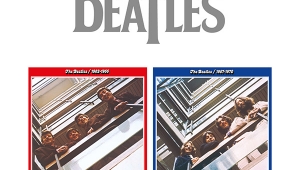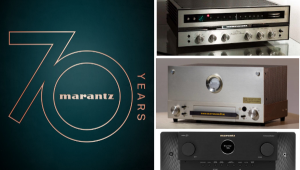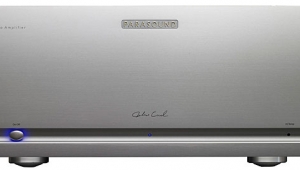| Columns Retired Columns & Blogs |
Hempcones and Hemptones
Most manufacturers who advertise in Stereophile hype an exquisite blend of old world craftsmanship and high technology. The gambit is particularly common in the business of selling loudspeakers, where ad copy pushes the sonic advantages of the latest ultra-stiff, indestructible, and nearly weightless cone materials such as Kevlar, carbon-fiber, anodized aluminum, or platinum-plated titanium.
Footnote 1: The extraordinary-sounding Mission Pilastro loudspeaker, that John Atkinson reviewed in December 2002, used a hemp-cone midrange unit.—Ed.
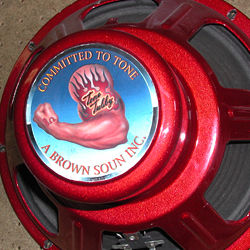 Here in Marin County, California, the quest for better sound takes a more organic approach. Under the unofficial direction of charismatic loudspeaker guru John Harrison, a growing group of musicians is swearing by the virtues of hemp-fiber cones. Not a riff from an old Cheech & Chong routine, "hempcones" are real products and may offer real benefits, when and if they are ever incorporated into high-fidelity gear (footnote 1). They are already in widespread use in the pro audio world, for reasons that were revealed to me in a visit to A Brown Soun (correctly spelled, and pronounced just the way it looks), a local pro audio loudspeaker repair shop and small-scale manufacturing facility.
Here in Marin County, California, the quest for better sound takes a more organic approach. Under the unofficial direction of charismatic loudspeaker guru John Harrison, a growing group of musicians is swearing by the virtues of hemp-fiber cones. Not a riff from an old Cheech & Chong routine, "hempcones" are real products and may offer real benefits, when and if they are ever incorporated into high-fidelity gear (footnote 1). They are already in widespread use in the pro audio world, for reasons that were revealed to me in a visit to A Brown Soun (correctly spelled, and pronounced just the way it looks), a local pro audio loudspeaker repair shop and small-scale manufacturing facility.
Backstory: My admittedly belated discovery of hempcones and "Tone Tubbies," the finished products that use them, grew out of a chance meeting with Joli ("Joe Lee") Valenti in a neighborhood pizza shop, where we were watching the Minnesota Timberwolves deprive the Sacramento Kings of a shot at the NBA title. The son of Dino Valenti, the late founding member of Quicksilver Messenger Service, Joli is himself a singer and guitarist with the latest incarnation of the band. He's also a one-man networking service—one of those happy, entertaining souls who seem to know everyone and just love putting folks together to see what happens. No sooner had the word "audio" escaped my lips than Joli was waxing enthusiastic about hempcones and Tone Tubbies, convincing me that I had to check 'em out. "They're all over Mix and Guitar Player," he gushed. Always eager to explore the offbeat and unusual, and perhaps to bask for a moment in the uneven heat of a mad scientist at work, I agreed.
A Brown Soun nestles among dozens of musicians' rehearsal spaces in a dingy light-industrial park within a stone's throw of the US 101 freeway. The park is a warren of dank, dimly-lit human burrows, and its back alley serves as a sort of village street for the community of performing artists, some of them legendary, some known only to their peers and fiercely loyal fans. We strolled into the repair shop/warehouse/factory just as a couple of techs were putting the finishing touches on an overhaul of Warren Haynes' Fender amp cabinet—including replacing the stock drivers with new Tone Tubbies. One of the techs dropped his screwdriver, strapped on a Stratocaster and put the hempcones through the ear-splitting equivalent of ten grueling laps around the test track while a half dozen solemn-faced colleagues stood around and nodded approvingly over what they were hearing. It was very much a scene from any demo room at any high-end trade show, but transposed to a parallel universe.
At the center of it all was the loquacious, high-energy John Harrison—"Johnny" to his friends—the speaker-building genius behind the hempcones phenomenon. It all began about three years ago when an entrepreneur from Mendocino County introduced him to hemp paper. (Mendocino is in Northern California's rural "green triangle," where cannabis has been the #1 cash crop and keystone of the local economy for decades.) Harrison had been searching for an alternative to paper made from wood pulp, almost universally used in large drivers in pro speakers. His early experiments with the new material showed promise. In his hands, "doped paper cones" took on quite a literal meaning. Although no chemist, he believes that hemp's longer fibers make for stiffer cones with smoother response, natural harmonics, and reduced breakup and other misbehaviors at high drive levels.
Many musicians agree. Haynes is the latest to make the transition, joining an illustrious group that includes Carlos Santana, Joe Satriani, Eric Clapton, Phil Lesh, Bob Weir, Billy Gibbons, and Kirk Hammett, whose plaudit is a favorite at A Brown Soun: "These cones smoke—legally!"
Harrison's crew assembles drivers in standard sizes from 6" diameter to 15", with either alnico or ceramic magnets, and even makes a strain of "Tone Tubbies" with 16-ohm voice-coils. He's begun licensing his patent-pending technology to other manufacturers, among them Eminence, maker of a 12" woofer called the "Patriot Cannabis Rex." (The label on the speaker's magnet is a compelling work of commercial art, with its text over a half-tone flag, evoking both made-in-America pride and party-all-night hedonism.) An undisclosed manufacturer in Chicago makes the raw hempcones, and Harrison recently began sourcing "hempwood" for cabinet material from a maker in Canada. It looks very much like the MDF (medium density fiberboard) used to make most audiophile loudspeakers, but has a nubbier texture. Harrison claims it's very strong, with low inherent resonance, ideal for building speaker cabinets.
The most entertaining demonstration of hempcones' sonic attributes was Joli Valenti channeling an old black bluesman through four stacked PA cabinets while Harrison accompanied him on keyboard. The most convincing was an A/B comparison done by bass player Liam Hanrahan, a slight, pale, intense fellow with dark copper dreadlocks falling to his waist. He looks as if he stepped right out of Lord of the Rings into his studio. With his bass feeding a Mesa Boogie Road Ready 215, he alternated via a switch box between two identical EV-M400 bass cabinets, one fitted with stock drivers and the other fitted with Tone Tubbies. The stock drivers had the edgy, hollow sound of many pro loudspeakers. The Tone Tubbies, by contrast, were full sounding—richer, deeper, smoother, by far more musical and more pleasant to hear.
"They've got better fundamentals, lower, more rounded," mused Hanrahan. The stock drivers had what audiophiles would call a "peaky" response, something pro soundmen try to tame with heavy-handed equalization. Listening to such speakers can be quite fatiguing, as noted by almost all the players who've moved into the hempcone camp. "They're all telling us they can practice longer without getting headaches," Harrison commented.
Harrison isn't focused completely on the world of stage and studio. He's also dabbling with a small two-way speaker for "possible home theater use" and console monitoring. The prototype sounded promising with an assortment of guitar tracks, although it seemed to have the recessed midrange of almost every small studio monitor I've ever heard. My request for "a cleanly recorded female vocal" as a check for midrange clarity sent Harrison and team scrambling through the shop, only to come back empty-handed. The place is clearly a gearhead, guy-stuff domain. The nearest thing to "clean" was a 20-year-old live recording of David Grisman, a disc with a view-from-the-back-of-the-hall perspective that made it less than ideal for any kind of sonic evaluation. Note to self: bring your own discs next time.
One of the more baffling aspects of the electronics industry is how little traffic there is between the pro audio world and its consumer counterpart. Only a few companies—Yamaha, JBL, Manley Labs, Genelec, for example—have a foot in each world. Most are devoted solely to one market and act as if the other didn't exist, to the detriment of all. Just as many audiophiles are unaware of what goes on in the studio, many musicians are unaware of how far home playback technology has advanced.
Even the most fundamental engineering goals are approached differently—pro audio speaker designers favor drivers with high sensitivity and wide dynamic capabilities, while tolerating intense levels of coloration; hi-fi designers hate coloration, but accept ridiculous dynamic limits. Dynamic compression, a phenomenon in which loudspeakers' power output grows in diminishing increments as drive level increases, is one of the primary reasons why playback may never sound like the real thing. There's a serious loss of energy between the time the musician strums his strings in a recording session and when you hear it reproduced at home. Yet, hi-fi designers readily accept this sort of non-linear behavior in the dogged pursuit of smooth response, wide dispersion, deep imaging, and all the other sonic qualities audiophiles hold so dear.
To be fair, the goals are different. A guitar speaker has to do only one thing—to sound like a guitar, whatever that means to the player. A hi-fi speaker has to mimic every voice and instrument on the planet. There is room for cross-pollination, of course, and John Harrison wants to explore it. He's got something promising and is eager to license it to makers of consumer loudspeakers. He wants to share his passion with a larger audience, but he doesn't know how to cross the bridge.
For that he needs an aggressive sales-and-marketing expert who understands both markets. The disarray and languid pace at A Brown Soun would drive a serious business type bonkers, but a marketing alliance could be a huge opportunity for someone. Who knows? Like the right mix of gear with the right mix of tunes, the right mix of people could put the "high" back in "high fidelity."
John Harrison can be reached at (415) 479-2124.
Footnote 1: The extraordinary-sounding Mission Pilastro loudspeaker, that John Atkinson reviewed in December 2002, used a hemp-cone midrange unit.—Ed.
- Log in or register to post comments
